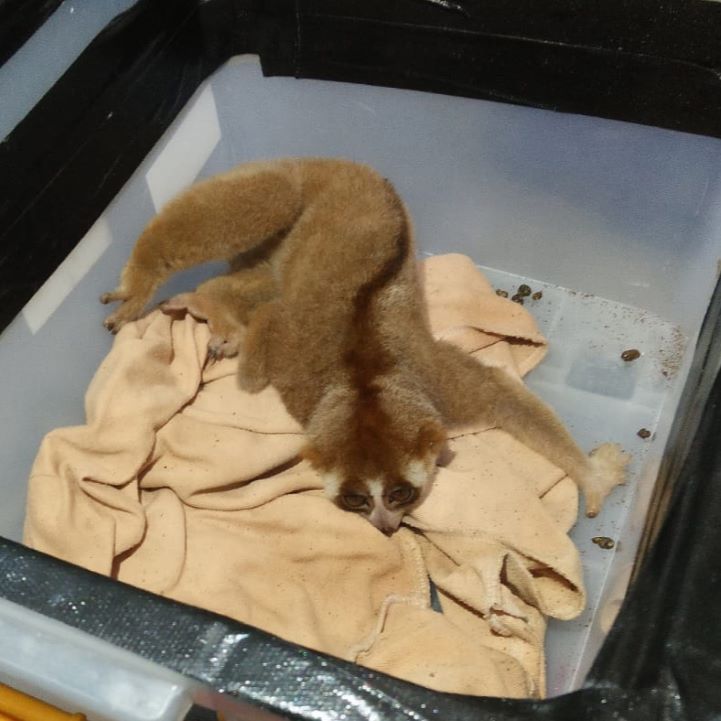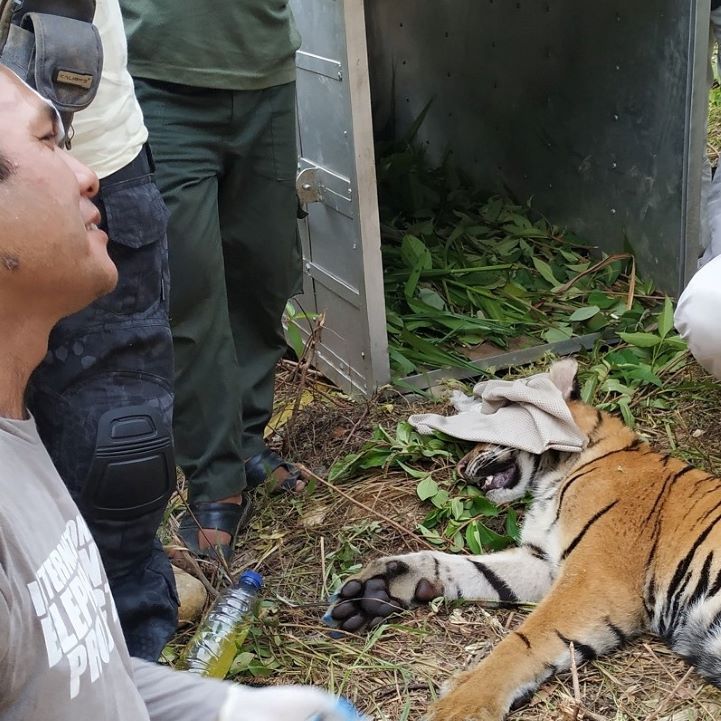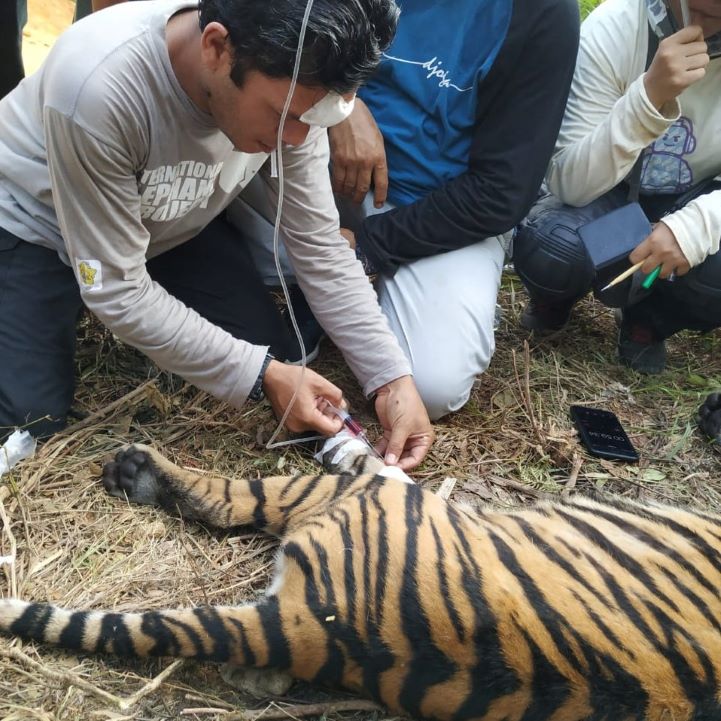To celebrate World Veterinary Day on 24 April, we spoke to Dr Christopher Stremme, one of the senior veterinarians at Syiah Kuala University, the only place in Indonesia that provides hands-on practical and comprehensive training in wildlife medicine for new veterinarians. Dr Stremme and the Wildlife Ambulance are occasionally called upon to assist our partners to help with wildlife rescues and veterinary services.
What is your role?
My name is Christopher and I’m a veterinarian. Since 2015 I have been invited to the Syiah Kuala University in Banda Aceh to help develop wildlife veterinary training and teaching programs for veterinary students and newly graduated veterinarians.
_reduced_for_blog.jpg)
_reduced_for_blog.jpg)
Above: Dr Christopher Stremme instructing trainee vets on how to care for a Sumatran elephant
What does the Wildlife Ambulance focus on?
Part of this work is that we have established Wildlife Ambulance with our Veterinary Faculty through which we are able to provide veterinary services for wildlife. We are mostly working together with the government conservation agency but we also work together with NGOs wherever there is the need for veterinarians to have skills with wildlife. This is one part of the role of the Wildlife Ambulance - to provide some of the veterinary expertise which is needed in the field of wildlife welfare and conservation.
The other part of the Wildlife Ambulance task is to function as a teaching and training tool for our veterinary students at the faculty. Besides teaching and lectures in the classroom about wildlife (myself mainly about elephants) the students are also invited to accompany the Wildlife Ambulance during field work to gain direct practical experience and hands-on training on various kinds of needs for wildlife medicine. Sometimes the Wildlife Ambulance organises field courses where we take students to elephant camps when we do our regular health care and so on.
So the Wildlife Ambulance has two focuses: providing a wildlife veterinary service for wildlife conservation and providing veterinary teaching for students.
What are some of the greatest challenges you face?
Working in the field together, there are often technical challenges. In the field, when we have to treat wildlife in the actual wild, the equipment that we can carry is limited so we need to think what we can do with the limited amount of equipment. Sometimes we are not actually prepared - we are called to an emergency and have to walk for several hours until we reach the place of an injured animal in the wild. The amount of equipment we can take with us is limited and often we have to improvise.
That actually is part of the interesting work in this program. For me, working in a non-profit program with non-profit organisations with the university, the biggest challenge always is to get enough financial support to be able to fund the non-profit activities, which are not directly commercially oriented. That will always be a big challenge for the long run to keep programs and work like we’re doing with the veterinary faculty, to keep it alive.
But this is very important because it provides more knowledge and better training in wildlife conservation medicine to students, which is something that is not very well developed in Indonesia. What we are doing at our faculty in Banda Aceh is actually quite unique in Indonesia so far. Very slowly other universities have started to teach some wildlife courses. But in terms of training future wildlife veterinarians on the level that we have started to do it, so far this is the only place in Indonesia that provides that for the students.
And with the unique fauna that we have in Sumatra and the many conservation threats for many conservation programs now, it is very important to have veterinarians that have knowledge and experience in handling and treating wildlife.
Below you can see a tiger rescue carried out by the Wildlife Ambulance, as well a sun bear, elephant and slow loris who were cared for by the Wildlife Ambulance vets, and some of the trainee vets learning at the university.
_reduced_square.jpg)
_reduced_square.jpg)

_square.jpg)


